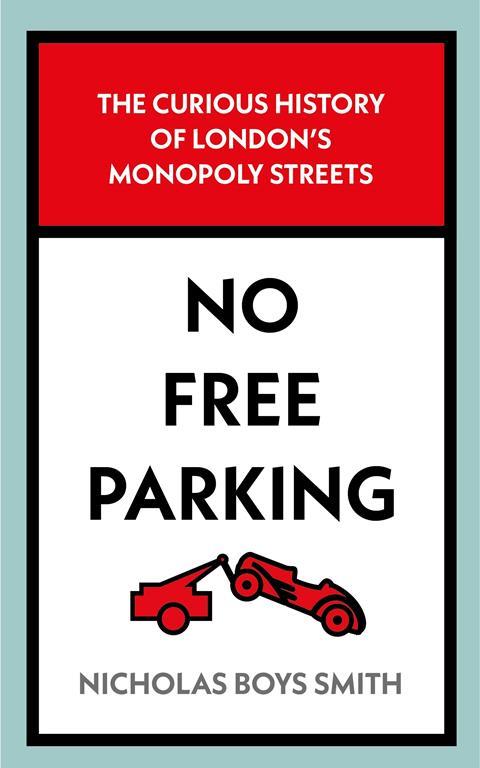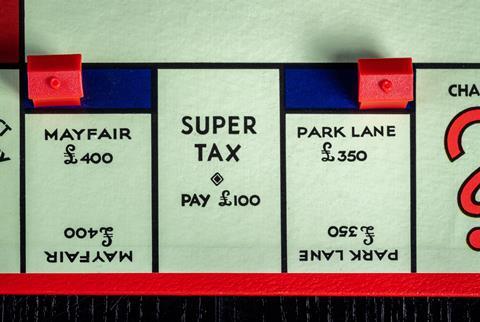Robert Adam enjoys Nicholas Boys Smith’s deep dive into the history of London’s streets

The founder of Create Streets has written a book on the streets of London. This might sound obvious. But Nicholas Boys Smith has done something much more creative and interesting than just telling us that streets are important.
First, there’s how he’s chosen which streets to write about. He’s taken, what he shows to be, the odd way street names were chosen for the London Monopoly board, and then he’s written a chapter on each. And for good measure he adds the utilities and stations.
This is why, rather curiously, the book is called No Free Parking. It’s not what you might think - a rant against inner city cars. For those that play will know, it’s taken from a corner of the Monopoly board.
Second, he does show us that streets are important, but not with polemic (OK just a bit here and there) but with fascinating stories about their history. He ranges from the iron age to the 20th century, from peers to prostitutes.
Wondering why a tiny alley called Vine Street ended up on the Monopoly board, takes Boys Smith on a journey into the lost streets of London
In doing so, he shows how permanent they are and how they’re the glue that holds the city together. Above all, we can see that their history still has a tale to tell on the character of London today.
We learn that Leicester Square, originally St Martin’s Field and then Leicester Fields, owes its particular character to Anglo Saxon parishioners’ rights over common land. Here local people dried their clothes on the hedges and these ancient rights, surviving hidden in covenants, made sure it stayed a popular place.
Wondering why a tiny alley called Vine Street ended up on the Monopoly board, takes Boys Smith on a journey into the lost streets of London. There is a lament for Wych Street, Vere Street and Blackamoor Street, which disappeared just at the moment when their notorious squalor became the romantic subject for early photography.

Oxford Street is linked to “Go to Jail” and a chapter on the history of London jails. Oxford Street, once a rough and potholed Tyburn Road, was the route “going west”, from Newgate to the famous gallows, the Tyburn Tree, at Marble Arch. It was the way the mobs went to witness the regular hangings and since then never became a fashionable place to live.
But behind the less salubrious Oxford Street lies fashionable Mayfair, not a street but a district. Here we learn of the aristocratic developers, tangled dynastic debt and the craftsmen speculators that were responsible for much of the expansion of London. It turns out that the relocation of the American embassy from Mayfair to Nine Elms has severed that nation’s ancient link to the area - Mayfair was home to both the first American ambassador and Dwight Eisenhower, and the Office of Strategic Services during World War Two.

Out of these rich tales of the tangled history of London comes several lessons.
History matters today. While we may not know any of the detail, the wonderful complexity and life of London’s Streets, and so London itself, is made up from the accidents and ambitions of countless people.
The slightly chaotic nature of British society and the ancient rights of the people have kept away the aggressive replanning that creates places sterilised by the limitations of any single person’s imagination.
The more complex and diverse a place, the more it can adapt and take on new projects and ideas without destroying what makes it unique.
There is nothing new about planning laws. Some of the older ones promised prison for offenders. Each one leaves its mark but they are not sacred. There is an expanding history of greenbelts for London, each transgressed or forgotten.
This is a wonderful book. You can dip in and dip out. Fascinating and informative, each chapter its own story. I would thoroughly recommend it.
Postscript
No Free Parking: The Curious History of London’s Monopoly Streets by Nicholas Boys Smith is published by Blink Publishing.
Robert Adam is an architect, urban designer and author. He is also a visiting professor at the University of Strathclyde and a Design Council Expert.
















No comments yet